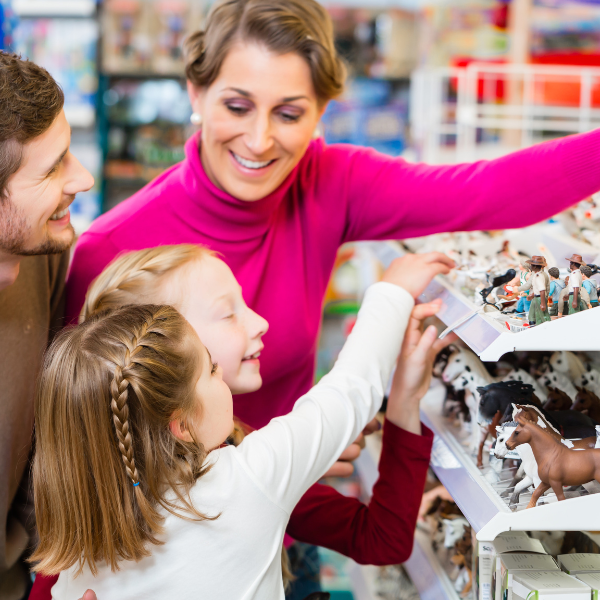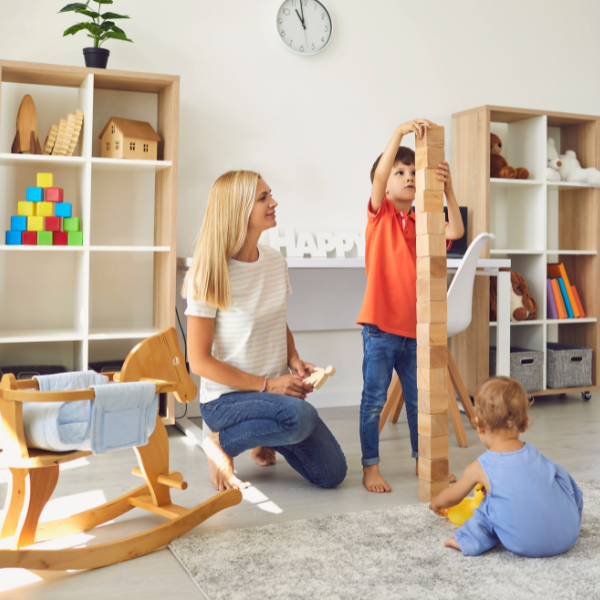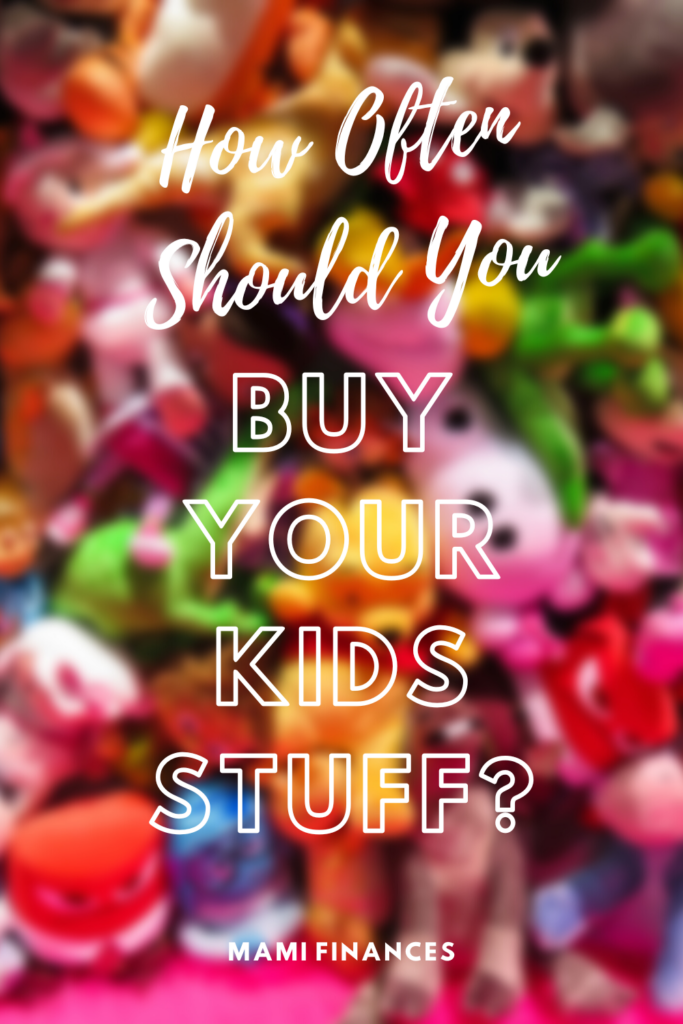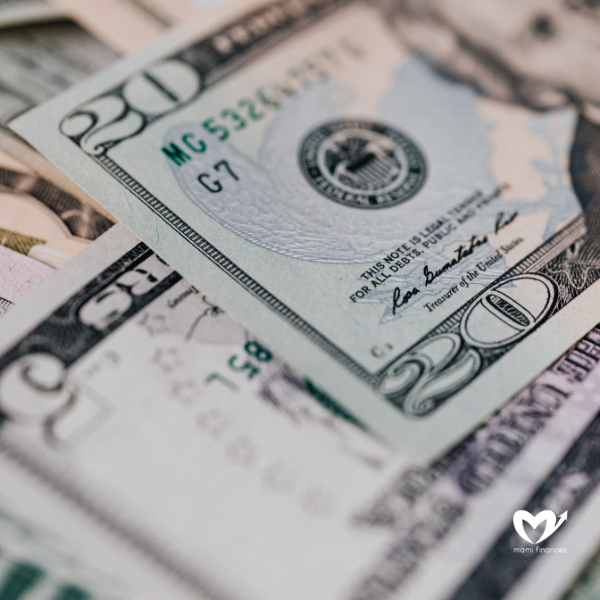How Often Should You Buy Your Kids Stuff?
In today's consumer-driven society, it's easy to get caught up in the cycle of constantly buying new toys for our children. However, finding the right balance between providing for our children's happiness and avoiding excessive clutter can be a challenge.

In this article, we will explore how often parents should buy toys for their kids and discuss the factors to consider when making purchasing decisions. By understanding these considerations, parents can make informed choices prioritizing their child's happiness and well-being.
The cluttered playroom dilemma
Parents all over the world can relate to the cluttered playroom dilemma. It's common to see toys scattered everywhere, making it difficult to navigate through the room. Not only does this create a mess, but it can also be overwhelming for both parents and children.
Finding a balance between having enough toys for your child's enjoyment and keeping the playroom tidy can be a challenge. In this section, we will explore the importance of considering buying toys for kids and how often it should be done.
The importance of considering buying toys for kids
When it comes to raising children, parents often face the question of how often to buy toys for their little ones. While it's true that children don't necessarily need an endless supply of toys, it is important to consider the benefits that toys can provide in terms of their development and learning. Toys serve as tools for exploration, creativity, and imagination.
They help children develop fine motor skills, problem-solving abilities, and social interaction skills. Therefore, it is crucial for parents to carefully consider the role of toys in their child's life and make thoughtful decisions about when and what to purchase.
Factors to Consider
When it comes to buying toys for your kids, there are several factors to consider. One important factor is the age of your child. Younger children may require simpler toys that stimulate their senses and motor skills, while older children may benefit from more complex toys that promote learning and problem-solving. Another factor to consider is your child's developmental stage.
Understanding their interests and abilities can help you choose toys that align with their current stage of growth. By considering these factors, you can make informed decisions about what toys are best for your child.
Age of the child
When considering how often to buy toys for your child, their age plays a significant role. Younger children, such as infants and toddlers, may not require frequent purchases as their developmental milestones are less frequent.
However, as they grow older and their interests change, it may be necessary to purchase new toys more frequently. By understanding your child's age and stage of development, you can make informed decisions about when to introduce new toys into their playtime routine. Remember that every child is unique and may have different preferences and needs at each age.
Child's developmental stage
When considering how often to buy toys for your kids, it's important to take into account their developmental stage. Every child goes through different stages of growth and learning, and their needs and interests change accordingly. For younger children, toys that focus on sensory exploration and motor skills development are essential.
As they grow older, toys that promote cognitive abilities, creativity, and social interaction become more relevant. Tailoring your toy purchases to your child's specific developmental stage can ensure that they are engaged and challenged in a way that supports their growth and learning.
Frequency of Buying
When it comes to buying toys for your kids, finding the right frequency can be a bit challenging. The recommended time frame for buying toys varies based on factors such as age and developmental stage. It may be necessary for younger children to buy new toys every three to four months, while older children may only require new toys three times a year.
However, it's important to consider alternatives to buying new toys, such as rotating toys or borrowing from friends, to avoid clutter and maintain financial balance. Ultimately, finding the right balance between providing new toys and utilizing existing ones is key.
The recommended time frame for buying toys
When it comes to buying toys for your children, it is important to consider the recommended time frame. Experts suggest that purchasing new toys every three to four months for children under 2 years old can help keep their playtime engaging and stimulating.
For older children, around three times a year is often sufficient. However, every child is different, so it's essential to assess their developmental needs and interests before making a decision. By regularly updating their toy collection, you can provide them with new experiences and opportunities for growth.
Alternatives to buying new toys
Parents have several alternatives to buying new toys for their children. One option is to consider borrowing toys from friends or family members. This allows children to enjoy different toys without the need to constantly purchase new ones. Another option is to explore thrift stores or online marketplaces where gently used toys can be found at a fraction of the cost.
Also, parents can encourage their children to engage in imaginative play using everyday household items, fostering creativity and resourcefulness. By exploring these alternatives, parents can save money while still providing their children with enjoyable play experiences.

Budgeting and Financial Considerations
When it comes to buying toys for your kids, it's important to consider your budget and financial situation. Setting a toy budget can help you prioritize your spending and avoid overspending on unnecessary items. Take into account your monthly expenses and allocate a reasonable amount for toys.
Also, making wise purchasing decisions by comparing prices, looking for sales or discounts, and opting for quality over quantity can help you stay within your budget while still providing the best toys for your child. Remember, it's not about buying the most expensive toys, but rather choosing toys that will provide value and enjoyment for your child without breaking the bank.
Setting a toy budget
When it comes to buying toys for your kids, it's important to consider your budget. Setting a toy budget can help you stay within your financial means while still providing your children with new and engaging playthings.
By determining how much you're willing to spend on toys each month or year, you can make wise purchasing decisions and ensure that you're not overspending. It's also a great way to teach your kids about the value of money and the importance of budgeting.
Making wise purchasing decisions
When it comes to buying toys for your kids, making wise purchasing decisions is crucial. It's important to consider factors such as the quality, safety, and educational value of the toys. Look for toys that are durable, non-toxic, and age-appropriate.
Also, take the time to read reviews and research different brands to ensure you're getting the best value for your money. By making informed choices, you can provide your children with toys that not only entertain but also promote their development and creativity.
Quality vs Quantity
When it comes to buying toys for your kids, there is often a debate between quality and quantity. Many parents struggle with the decision of whether to buy a few high-quality toys or a larger quantity of less-expensive options.
While it may be tempting to buy a lot of toys to keep your child entertained, investing in quality toys can have long-lasting benefits. High-quality toys are typically made with durable materials and are built to last, making them more resistant to wear and tear. They are also often designed to stimulate creativity and encourage imaginative play.
On the other hand, having too many toys can lead to overwhelming and clutter in your child's playroom. It can be challenging for children to fully engage with and appreciate each toy when they have an abundance of options. By prioritizing quality over quantity, you can ensure that your child's playtime is more focused and meaningful.
That being said, it's still important to strike a balance. Variety is essential for your child's development, as different types of toys offer unique learning opportunities. So while it's good to invest in a few high-quality toys, it's also beneficial to incorporate a mix of toys that cater to different interests and skills.
Ultimately, finding the right balance between quality and quantity will depend on your budget and your child's individual needs and preferences. Remember that the goal is not to have the most toys, but rather to provide your child with engaging and enriching play experiences that promote their learning and development.
Investing in durable and long-lasting toys
When it comes to buying toys for your kids, it's important to consider their durability and longevity. Investing in durable and long-lasting toys not only saves you money in the long run but also ensures that your child can enjoy them for a longer period of time.
Look for toys made from high-quality materials that can withstand rough play and won't easily break or wear down. These toys will not only provide endless hours of entertainment but also become cherished childhood keepsakes.
Balancing variety with quality
When it comes to buying toys for your kids, finding the right balance between variety and quality is key. While it's important to offer a diverse range of toys to stimulate their imagination and keep them engaged, it's equally crucial to prioritize quality over quantity.
Investing in durable and long-lasting toys ensures that they can withstand rough play and last for a longer time. By striking this balance, you can provide your child with a well-rounded play experience that promotes both creativity and longevity.
Educational and Developmental Value
When it comes to buying toys for kids, one important factor to consider is their educational and developmental value. Toys that promote learning and skill development can greatly contribute to a child's growth and cognitive abilities.
Whether it's puzzles, building blocks, or interactive games, choosing toys that engage children's minds and challenge them to think creatively can have a significant impact on their overall development. Incorporating different types of toys that target various skills and abilities can provide a well-rounded learning experience for children.
Choosing toys that promote learning and skill development
When it comes to buying toys for our kids, it’s important to consider not just their entertainment value, but also their educational and developmental benefits. Choosing toys that promote learning and skill development can greatly enhance your child's growth and overall cognitive abilities.
Look for toys that encourage problem-solving, creativity, fine motor skills, and social interaction. Whether it’s building blocks, puzzles, or STEM-oriented toys, prioritizing educational value in your toy selection can make playtime both fun and enriching for your child.
Incorporating different types of toys
When it comes to buying toys for your kids, it's important to consider incorporating different types of toys into their playtime. Variety plays a crucial role in stimulating their imagination and promoting their overall development.
From building blocks and puzzles to arts and crafts, offering a diverse range of toys can help enhance their cognitive, motor, and creative skills. By rotating the types of toys they have access to, you can keep their playtime engaging and exciting.

Encouraging Creativity and Imagination
One of the greatest gifts we can give our children is the ability to think creatively and use their imagination. Instead of constantly buying new toys, parents can focus on providing open-ended toys that allow for endless possibilities.
Building blocks, art supplies, and dress-up clothes are just a few examples of toys that can spark creativity and imaginative play. By encouraging these types of play experiences, children not only have fun but also develop important cognitive and social skills.
Importance of open-ended toys
Open-ended toys are essential for the overall development of children. Unlike toys with a specific purpose or limited functionality, open-ended toys allow children to explore their imagination and creativity freely. These toys encourage problem-solving skills, critical thinking, and social interaction.
By providing endless possibilities for play, open-ended toys nurture a child's independence and self-expression. They promote open-mindedness, adaptability, and flexibility, preparing children for real-life challenges. Investing in open-ended toys is a great way to foster lifelong learning and development in children.
Strategies to inspire creativity
There are various strategies that parents can implement to inspire creativity in their children. Encouraging open-ended play is one effective approach, as it allows kids to use their imagination and explore different possibilities.
Providing a variety of materials and tools, such as art supplies, building blocks, and dress-up costumes, can also stimulate creativity. Also, setting aside dedicated time for creative activities and allowing freedom of expression without too many rules or guidelines can further enhance a child's creative abilities.
Special Occasions and Rewards
Special occasions and rewards provide the perfect opportunity to buy toys for your child. Birthdays and holidays are a time when children eagerly anticipate receiving gifts, so choosing a special toy during these occasions can bring immense joy and excitement.
Also, using toys as incentives and rewards for good behavior or achieving milestones can motivate children and reinforce positive behavior. It's important to strike a balance between indulging in these special occasions and ensuring that the focus remains on the child's well-being.
Birthday and holiday gifts
When it comes to special occasions like birthdays and holidays, buying toys for your kids can be a traditional way of celebrating and showing them love. Many parents choose to surprise their children with new toys on these occasions as a way to make them feel special and cherished.
Birthday and holiday gifts serve as a reminder that your child's happiness is important to you, and it gives them something to look forward to each year. However, it’s essential to strike a balance between giving them new toys and avoiding excessive clutter in their play space.
Using toys as incentives and rewards
Many parents find that using toys as incentives and rewards can be an effective way to motivate their children. Whether it's earning a new toy for completing chores or achieving a milestone, this approach can provide an extra incentive for children to work towards their goals.
However, it's important to strike a balance and not rely solely on material rewards. Mixing in non-toy rewards, such as special experiences or quality time together, can help cultivate a well-rounded sense of achievement and appreciation.
Conclusion
In conclusion, finding the right balance when it comes to buying toys for your kids is essential. It's important to consider factors such as age, developmental stage, and budgeting. Instead of constantly buying new toys, exploring alternatives like borrowing or swapping can be beneficial.
Prioritizing quality over quantity and choosing toys that promote learning and creativity can also contribute to your child's overall development. Special occasions can be a great opportunity to reward your child with a new toy. Ultimately, the key is to prioritize your child's happiness and well-being while avoiding unnecessary clutter.
Finding the right balance
Finding the right balance in buying toys for your kids is crucial. It's important to provide them with new and engaging toys that promote their development and learning. However, it's equally important not to overwhelm them with excessive toys that can lead to clutter and a lack of appreciation for each item.
Finding the right balance means considering their needs, interests, and age-appropriate toys while also avoiding the temptation to constantly buy new things. By striking this balance, you can ensure that your child benefits from a variety of toys without being overwhelmed or wasteful.
Prioritizing your child's happiness and well-being
As parents, one of our main goals is to ensure the happiness and well-being of our children. When it comes to buying toys, it is important to prioritize their happiness over excessive material possessions. Instead of constantly buying new toys, we should focus on providing them with a few high-quality toys that truly bring them joy.
This approach not only promotes contentment and appreciation but also teaches them the value of experiences and relationships over material things. By prioritizing their happiness and well-being, we can create a more meaningful and balanced childhood for our children.





